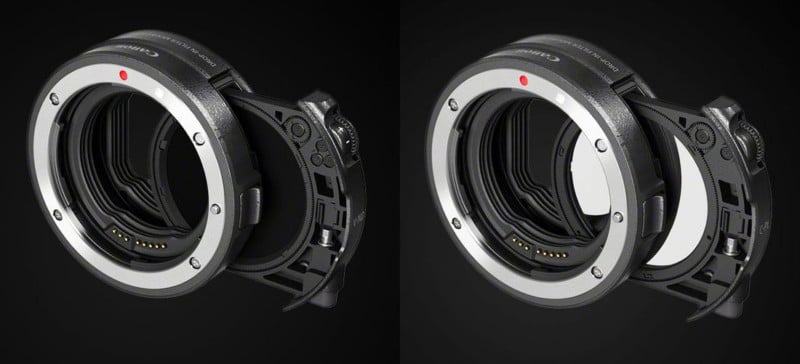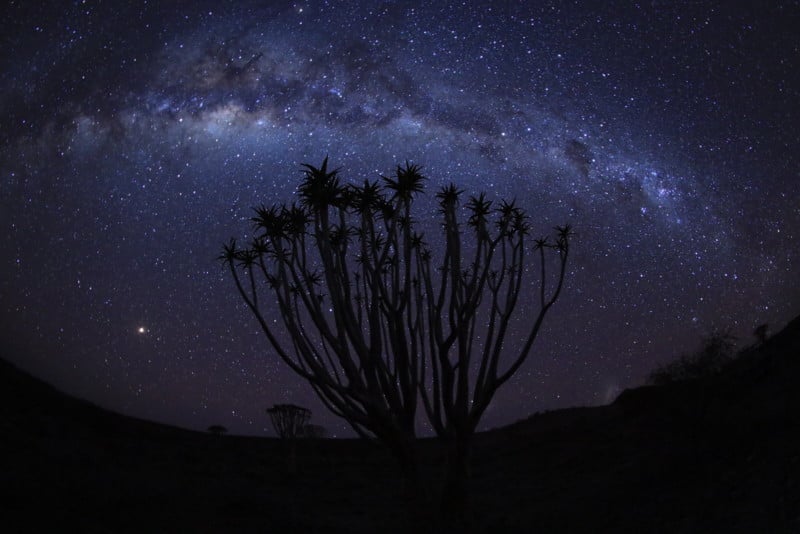
![]()
Canon has officially unveiled the new EOS R, the company’s first full-frame mirrorless competitor. The announcement comes just two weeks after Nikon revealed its first full-frame mirrorless system, the Z Series.
![]()
The Canon EOS R features Canon’s brand new RF lens mount, which Canon says is “revolutionary.”
![]()
The RF mount features a 54mm inner diameter, the same as Canon’s EF mount, but it has a shorter flange focal distance of 20mm that allows lenses to be simpler and optically superior.
![]()
The RF mount uses 12 electrical contacts for the fastest-ever communication between the camera bodies and lenses.
The mount is “an uncompromising balance of optical, mechanical and electronic engineering excellence enabling innovative full-frame lens designs, faster autofocus and high-speed communication between the camera and lens,” Canon says.
Canon is designing a new line of RF lenses specifically for this new mirrorless ecosystem, but the entire lineup of EF, EF-S, TS-E, and MP-E lenses are compatible with the camera if you use the EF-EOS R Mount Adapter.
![]()
In addition to the standard Mount Adapter, Canon has also created a Drop-In Filter Mount Adapter or Control Ring Mount Adapter to add additional functionality (i.e. filters and a customizable control ring) when adapting lenses.
![]()
The Drop-In Filter Mount Adapter is available with a variable neutral density (V-ND) filter or a circular polarising (C-PL) filter. A third clear (CL) filter is also available if you don’t wish to have any effects.

At the core of the EOS R is a 30.3-megapixel full-frame CMOS sensor with an ISO range of 100-40000 (expandable to 50-102400), backed by a DIGIC 8 image processor. There is a low pass filter in front of the sensor that helps combat moiré patterns at the cost of slightly reduced sharpness. The camera has an 8fps continuous shooting speed (for bursts of up to 100 max-quality JPEGs, 47 RAW, or 78 C-RAW), a shutter lag is as short as 50 milliseconds, and a startup time of 0.9 seconds.
![]()
The autofocus system of the camera has a maximum of 5,655 AF points using Canon’s Dual Pixel CMOS AF phase-detection system. The AF works at up to f/11 and features a 384-zone (24×16) real-time metering system. It can function well in low light thanks to its working range of EV -6 to 18 (EV -6 AF sensitivity requires f/1.2 lenses).
The AF system can achieve focus in as little as 0.05 seconds (when using the new RF 24-105mm f/4L IS lens), which is presently the fastest autofocus speed in the world, Canon says.
![]()
Other focusing features include Touch and Drag focusing and Focus Peaking.
![]()
Silent shooting in single-shot mode will allow photographers to be stealthy while working, and the feature will be available for continuous shooting in the future after an upcoming firmware update.
The top of the dust- and weather-resistant magnesium alloy EOS R features a large info display.
![]()
On the back of the camera is an OLED 3.69-million-dot electronic viewfinder with an approximately 100% coverage and a magnification of 0.71x.
![]()
Under the EVF is a 3.15-inch, 2.1-million-dot Vari-Angle touchscreen LCD monitor.
![]()
![]()
Above the LCD screen and to the right of the EVF is a new feature that takes a page out of Apple’s book: Canon has introduced a new Multi-Function Bar.
![]()
This touch bar allows photographers to quickly access customizable settings — things like autofocus, ISO, and white balance. You can both tap and slide your finger across the bar to access settings and adjust them.
![]()
Here’s a 7.5-minute video showing how the lens control ring and camera Multi-function bar work in the EOS R system:
For off-camera lighting, the EOS R is compatible with Canon’s EX line of Speedlites and can do E-TTL II metering. Canon has announced a new Speedlite, the EL-100, alongside the EOS R. The EL-100 can rotate upwards and to the left and right, has a max guide number of 85ft/26m at ISO 100, has a 24mm wide-angle coverage, has optical wireless flash functionality, has flash exposure control, and features a mode dial with an AUTO position.
![]()
In the area of video, the EOS R can shoot in 4K at 30fps and 1080p at 60fps with Canon Log (12 stops of dynamic range), 10bit 4:2:2 HDMI output, and a maximum recording time of 29 minutes and 59 seconds. The side of the camera has mic and headphone jacks.
![]()
Like Nikon and its Z6, Canon has decided to put a single memory card slot in the EOS R. Unlike the Z6, which uses XQD cards, the EOS R uses SD/SDHC/SDXC memory cards. Nikon has eyes on the future of memory cards (and XQD’s transition to CFexpress) while Canon is allowing its DSLR users to adopt the EOS R with their existing collection of SD cards and readers.
Other features and specs of the EOS R include sensor self cleaning, dust deletion data, face detection AF, Wi-Fi, Bluetooth, a USB 3.1 terminal, LP-E6N battery compatibility (and up to 560 shots per charge), USB charging, a working temperature range of 32–104°F (0–40°C), a working humidity range of 85% or less, physical dimensions of 5.35×3.87×3.32in (135.8×98.3×84.4mm), and a weight of 1.28 lbs (580g).
Here’s a closer look at the EOS R and its features:
Here’s a comparison of how the EOS R’s features and specs compare to the 5D Mark IV DSLR:
![]()
Leading up to today’s announcement, Canon has reportedly been developing two different full-frame mirrorless camera models. And while Nikon launched its high-end and lower-end cameras (the Z7 and Z6, respectively) at the same time, Canon is said to be saving its pro-grade camera for a separate unveiling later on. The EOS R would therefore be a direct competitor to the Nikon Z6 and Sony a7 III.
Four Canon RF Lenses
Canon has announced four initial RF lenses that will be launched with the EOS R: the RF 35mm f/1.8 IS Macro STM, RF 50mm f/1.2L USM, RF 24-105mm f/4L IS USM, and RF 28-70mm f/2L USM.
![]()
Here’s a look at each lens with Canon’s descriptions of them:
RF 35mm f/1.8 IS Macro STM
![]()
“A fast-aperture 35mm f/1.8 macro lens, offering a naturally wide-angle perspective and close focusing, this is a great lens for everyday creativity where flexibility is key.”
RF 50mm f/1.2L USM
![]()
“Setting new standards of optical quality and speed, this 50mm f/1.2 prime lens offers supreme sharpness, plus remarkable low-light performance.”
RF 24-105mm f/4L IS USM
![]()
“Featuring fast, silent, Nano USM technology, this 24-105mm f/4 offers photographers and filmmakers a small, light general-purpose lens with 5-stops of image stabilization.”
RF 28-70mm f/2L USM.
![]()
“A 28-70mm f/2 lens delivering image quality expected of prime lenses. With a super-fast, bright f/2 aperture right across the zoom range it gives stunning results in low light.”
Here’s a 4-minute introduction to RF lenses:
Sample Photos
Here are some official sample photos captured using the EOS R (you can download them in full-res here):





Pricing and Availability
The Canon EOS R will be available starting in October 2018 with a price tag of $2,299 for the body only — by comparison, the Nikon Z6 costs $1,997 and the Sony a7 III costs $1,998. It will also be bundled with a 24-105mm lens for $3,399.
The Canon Mount Adapter EF-EOS R and Control Ring Mount Adapter EF-EOS R will both be available in October 2018 with price tags of $100 and $200, respectively. Drop-in Filter Mount Adapter EF-EOS R will hit store shelves in February 2019 with a price tag of $400 with the variable ND or $300 with the circular polarizing filter.
The Canon EL-100 Speedlite will be available in October 2018 for $200.
The RF 50mm f/1.2L will cost $2,299 and hit store shelves in October 2018. The RF 35mm f/1.8 IS Macro, RF 24-105mm f/4L IS, and RF 28-70mm f/2L will start shipping in December 2018 with price tags of $499, $1,099, and $2,999, respectively.

